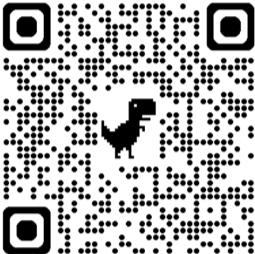Chemical Texturing 1
Chapter 20 review of chemical texturizing. Milady standard textbook.
Create multiple-choice games on Wisc-Online and play them on our Chakalaka mobile app!
But that's not all! Explore educational games created by others. Simply search by category or enter agame code number and dive into a world of learning and fun.
Download the Chakalaka mobile app here:

Topics of this game:
- The term pH is an abbreviation used for potential ______, and the symbol pH represents the quantity of ______ ions in solution.
- What tough exterior layer of the hair has the purpose of surrounding the inner layers and protecting the hair from damage?
- ______ give you the ability to permanently change the hair's natural wave and curl pattern, thereby offering clients a variety of styling options that would not otherwise be possible.
- Which layer of hair is the innermost layer of the hair, and often called the pith or core of the hair?
- Without a thorough understanding of ______, cosmetologists could damage hair, cause hair loss, and harm their clients and themselves.
- Which layer of the hair is located directly beneath the cuticle layer and is responsible for the incredible strength and elasticity of human hair?
- What are long, coiled polypeptide chains linked together end-to end like beads?
- Chemical hair texturizers temporarily raise the pH of the hair to an alkaline state in order to ______.
- What are the basic building blocks of the hair that affect how chemical solutions react? They include amino acids, peptide bonds, polypeptide chains, keratin proteins and ______?
- The ______ measures the acidity and alkalinity of a substance by measuring the quantity of hydrogen ions it contains.
- Which compounds are made up of carbon, oxygen, hydrogen, nitrogen and sulfur?
- The range of numbers used in the pH scale is ______.
- Which chemical bonds, also known as end bonds, join amino acids together, end-to-end in long chains, to form a polypeptide chain?
- In the restructuring process, coarse, resistant hair with a strong compact cuticle requires a chemical solution that is ______.
- In permanent waving, the shape and type of curl are determined by the shape and type of rod and the ______.
- What chemical side bonds are formed when two sulfur-type chains are joined together?
- What determines the size of the curl in a permanent waving process?
- Which bonds are relatively weak physical side bonds resulting from an attraction between negative and positive electrical charges, and are easily broken by by changes in pH?
- ______ is a two-step process in which the hair first undergoes a physical change caused by wrapping the hair on perm rods, and then a chemical change caused by the permanent waving solution.
- Hydrogen bonds are weak physical side bonds that result from an attraction between - and + electrical charges and are easily broken by water or heat, but reform as the hair is ______.
- The cortex of the hair is made up of millions of polypeptide chains cross-linked by these 3 types of side bonds ______ that are responsible for the elasticity and strength of the hair .
- Most alkaline permanent waves have a pH between ______.
- In permanent waving, the reduction reaction is due to the addition of ______.
- What is the second factor in the overall strength of the waving solution?
- Alkaline waves, also known as ______, were developed in 1941.
- What are the most common reducing agents used in permanent waving?
- Once in the cortex, waving solution breaks the disulfide bonds through a chemical reaction called ______.
- The ______ of the permanent waving solution is determined primarily by the concentration of the reducing agent, or thio.
- The active ingredient or reducing agent in alkaline permanent waves is ______.
- It is important for stylists to remember that ammonia-free does not necessarily mean ______.
- Exothermic waves create a chemical reaction that heats the waving solution and speeds up ______.
- All acid waves have three components, permanent waving lotion, neutralizer, and ______.
- ______ waves are perms using an ingredient that does not evaporate as readily as ammonia, so that there is very little odor associated with their use.
- What is the main active ingredient in true acid and acid-balanced waving lotion?
- Waves that are activated from an outside heat source, such as a conventional hood-type hair dryer, are _______ waves.
- Most acid waves used in salons have a pH value between ______.
- Modern acid waves are actually ______ waves, which are permanent waves that have a 7.0 or neutral pH.
- What is the most common neutralizer?
- Overprocessed hair that is further processed will become ______ and cause further damage, including breakage.
- What waving solutions use an ingredient other than ATG, such a cysteamine or mercaptamine, as the primary reducing agent?
- In permanent waving, most of the processing takes place as soon as the solution penetrates the hair, within the first ______.
- ______ waves are permanent solutions based on sulfites, considered very weak, and are usually marketed as body waves or alternative waves.
- The process that stops the action of permanent wave solution and rebuilds the hair into its new form is called ______.
- Hair that has too many broken disulfide bonds and will not hold a firm curl is considered _______.
- All perm wraps begin by sectioning the hair into ______.
- What soft foam perm rods are usually about 12 inches (30.5 centimeters) long with a uniform diameter along the entire length of the rod?
- The ______ uses only one end paper, placed over the top of the hair strand.
- What perm rods are equal in diameter along their entire length or curling area?
- The ______ is a perm wrap in which one end paper is placed under and another is placed over the strand of hair being wrapped, providing the most control over the hair ends.
- What is the most common type of perm rod?
- ______, also known as circle rods, are usually about 12 inches long with a uniform diameter along the entire length of the rod, and are secured by fastening the ends together to form a loop.
- The ______ uses one end paper folded in half over the hair ends like an envelope.
- In the croquignole method of wrapping, the hair is wound from the ______ in overlapping concentric layers.
- Caution should be used with on-base rod placement to avoid additional ______.
- In a ______, the hair is wrapped at an angle other than perpendicular to the length of the rod which causes the hair to spiral along the length of the rod.
- In permanent waving, panels of hair are divided into smaller subsections called ______.
- The angle at which a permanent wave rod is positioned on the head is referred to as ______.
- ______ minimizes stress and tension on the hair.
- The two methods of wrapping the hair around a perm rod are ______.
- ______ refers to the position of the rod in relation to its base section and is determined by the angle at which the hair is wrapped.
- ______, often found in home haircoloring products, leave a coating on the hair that may cause uneven curls, severe discoloration, or hair breakage.
- Which wrap utilizes partings and bases throughout the panels to follow the curvature of the head?
- Chemical services should not be performed if the scalp shows any signs of ______.
- What is another name for the double-rod wrap technique?
- Base sections are offset from each other row by row to prevent noticeable splits and to blend the flow of the hair, in which wrapping pattern?
- The ______, also known as a straight set wrap, is a wrapping pattern in which all the rods within a panel move in the same direction and are positioned on equal-sized bases.
- What is a very effective technique for blending between perm rods with opposite base directions using zigzag partings to divide base areas?
- ______ is the measurement of the thickness or thinness of a liquid that affects how the fluid flows.
User comments are currently unavailable. We apologize for the inconvenience and are working to restore this feature as soon as possible.

